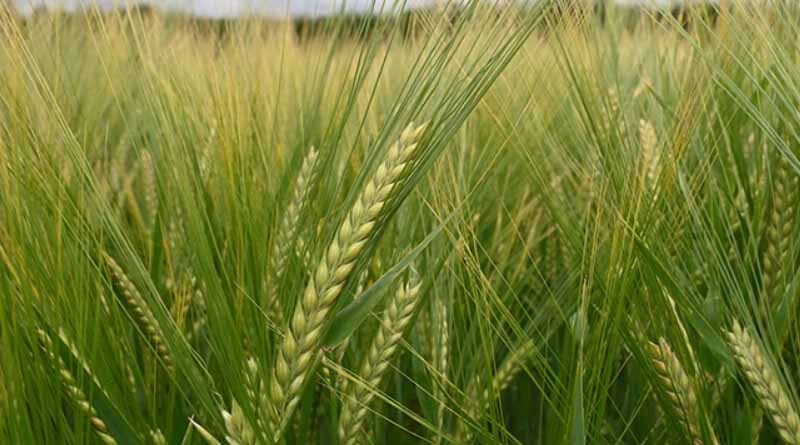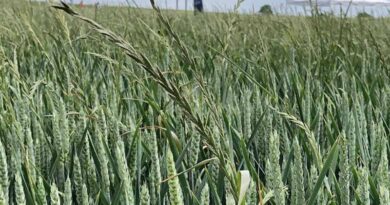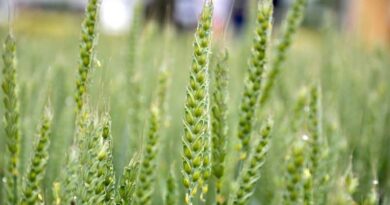Ryegrass success from integrated options
20 July 2021, UK: A farm’s successful battle to overcome black-grass has provided valuable insights into now managing its ryegrass issues, according to North Warwickshire based Velcourt farm manager, Ted Holmes. It’s a challenge he believes is attainable, and where he has set high targets to achieve manageable populations.
Ryegrass has been an issue for over 20 years on the 900-hectare in-hand farm he manages, as a legacy of a grass drying plant and the Estate’s extensive grassland. The problem affects around a third of the arable cropping area, and had been getting more serious in some areas.
It is certainly now a more prevalent and aggressive grassweed on the farm, compared to black-grass of which we have low levels, he reported.
“Seasonal weather has a significant impact on control levels; the last two winters have made things a huge challenge.”
Also Read: The genome of a Salt-secreting Mangrove Species Decoded by DBT-ILS
That’s resulted in Mr Holmes instigating a series of agronomy changes specifically to target ryegrass. Introducing more spring cropping and widening the rotation has been instrumental, he added.
- Delayed autumn establishment
- Growing competitive hybrid barley
- Higher seed rates
- Finer seedbed finish
- Focus on pre-emergence herbicide application
- More spring cropping
- Widening rotation
Where possible in a winter cereal scenario drilling is delayed on the worst affected fields, to effectively remove more of the autumn germinating ryegrass, along with increasing seed rates to out compete later emerging weeds. Later drilled winter wheat aims for 475 to 500 plants per m2, with hybrid barley seed rates drilled at 15 to 20% above standard recommended seed rates.
Furthermore, measures centred on reducing ryegrass plant populations include hand rogueing of affected field areas to eliminate weed seed return, along with patch spraying larger infestations. Other options being considered for next season include mechanical inter-row hoeing.
“It’s an ongoing process using as many cultural control tools available, to get every little gain possible. They don’t all work all the time; you win some battles and not others – but the war against ryegrass continues.
“Importantly, my understanding of ryegrass is growing every year, and with it the knowledge of how to combat it.”
Alongside the cultural controls, the herbicide strategy is entirely dependent on the robust pre-and post-emergence autumn treatments. The farm’s ryegrass has been tested triple R resistant – which precludes any spring contact herbicide in autumn crops.
As part of the pre-em herbicide stack, he sees that Defy offers a good level of control, but as with all herbicides the application is key to getting the best possible results. Time and effort spent getting a suitable finish behind the drill or, where possible, rolls, is important for good spray coverage, he urged.
“Correct nozzle choice and higher water volumes has a positive effect,” advised Mr Holmes. His favoured option for pre-emergence applications is currently an angled Syngenta 3D Nozzle working at 200 l/ha. Results are also dependent on sufficient soil moisture to get the most out of the herbicide, where dry conditions can result in poorer performance, he pointed out.
Find out more about the new Syngenta 3D ninety nozzle for pre-emergence applications
Resistance developing to the remaining autumn chemistry is also a major concern. It is primarily being addressed by widening the rotation and ensuring sensible restricted use of any given herbicide active. Overuse of any product that leads to its reduced efficacy would make subsequent decisions extremely hard, he warned.
On farm company trials and extensive resistance testing across the farmed area continue to assess all the options and flag up concerns, along with providing important learning and experience.
“It’s work in progress, but ryegrass can be managed,” claimed Mr Holmes. “We need to retain an open mind to all the options available to increase our control levels, whilst staying focused on remaining a profitable business.”















